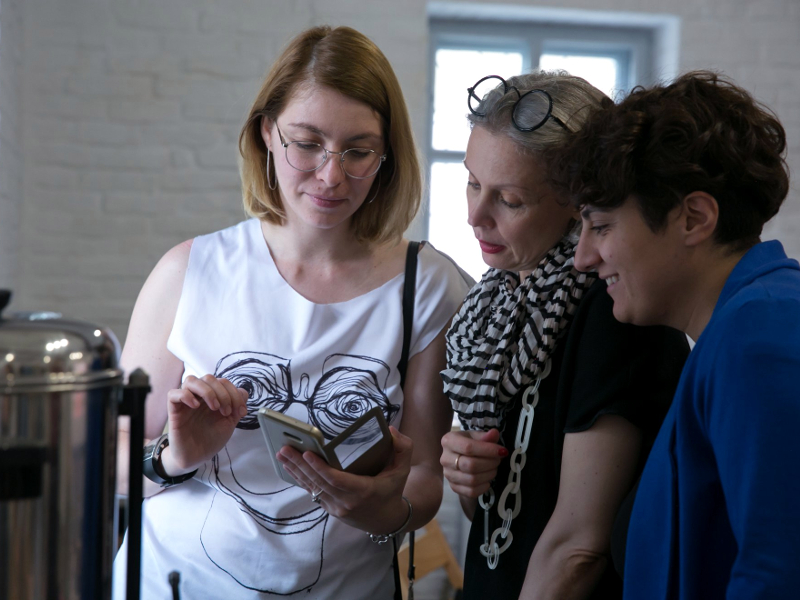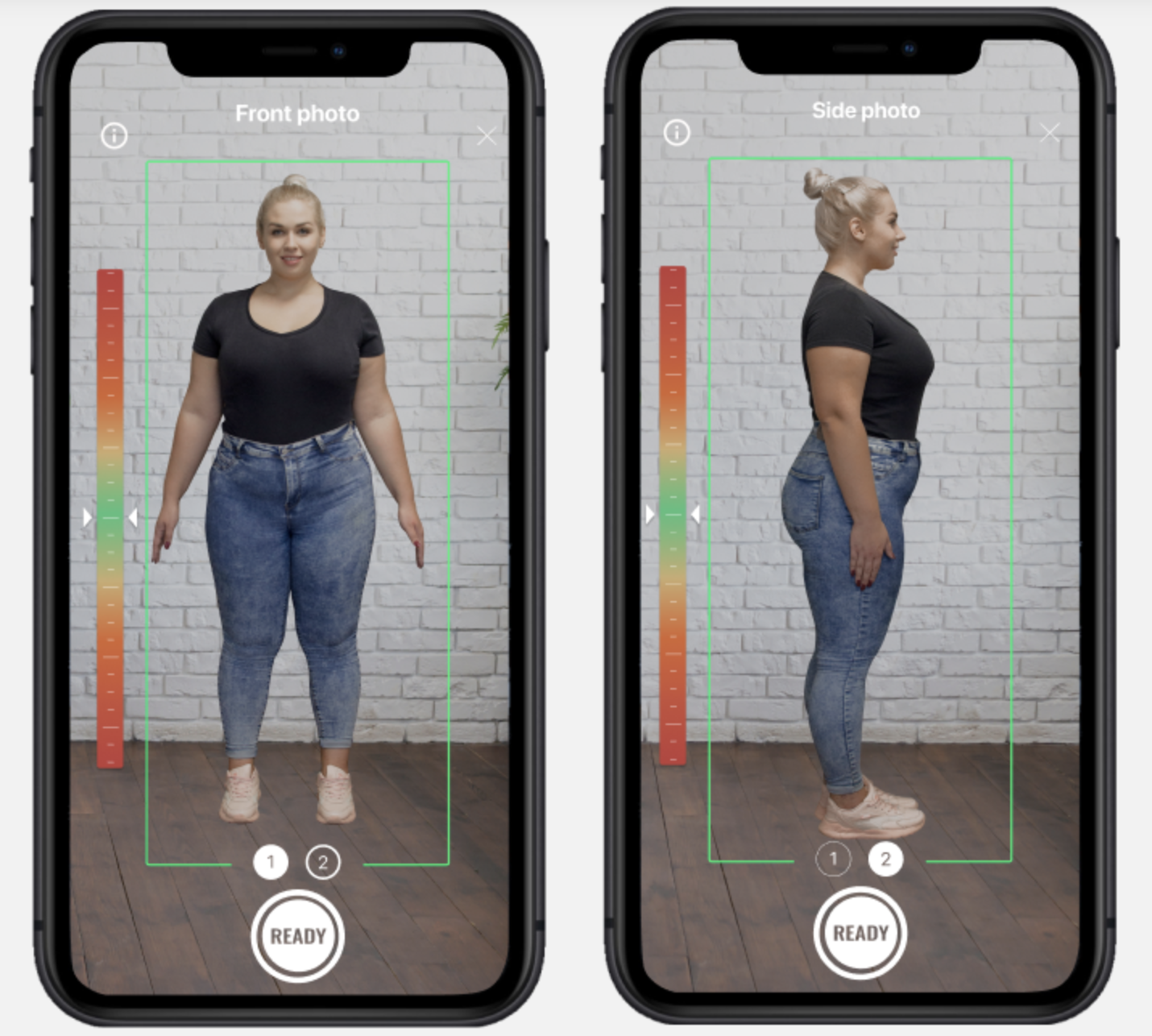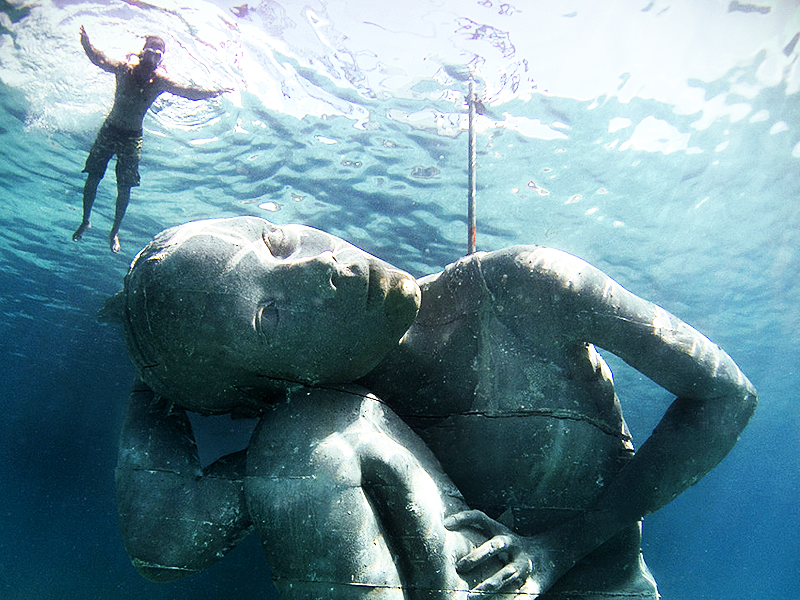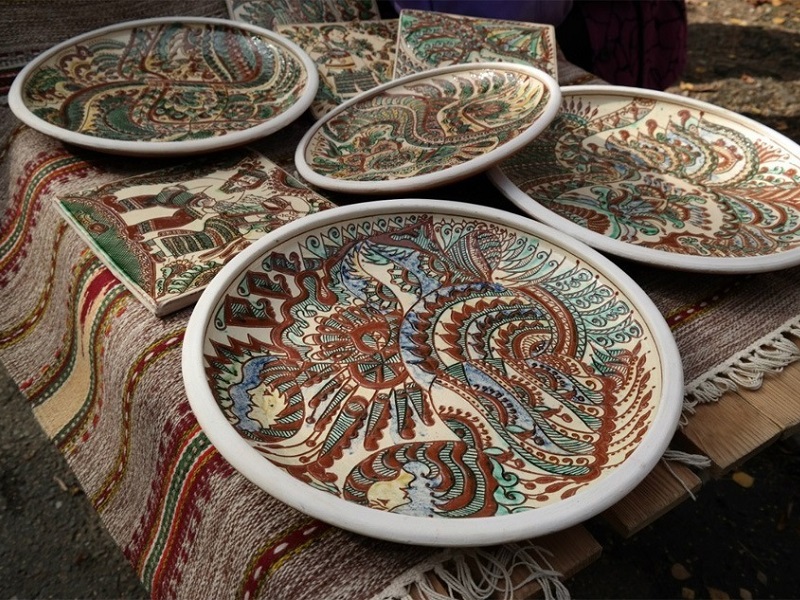
Mediation Or Finding The Ways To Common Ground In Culture
Viktoriia Danelian, MEDIATION project supervisor and manager, co-founder of Dream Projects (Kyiv), board member of Culture and Creativity Association
Tetiana Tsvelodub, MEDIATION project lecturer and organizer, co-founder of Dream Projects (Kyiv)
Nataliia Sinepupova, lecturer and organizer of exhibition by SEEE edition, director of School of Visual Communication (Kyiv)
Bozhena Zakaliuzhnaia, director of Harald Binder Cultural Enterprises Grant Program (Lviv)
Oleksandra Davydenko, coordinator of Harald Binder Cultural Enterprises Grant Program and communications manager of Jam Factory Infopoint (Lviv)
How did you come up with the project? What is it about?
Viktoriia Danelian: Mediation and communications topic, and particularly in the field of culture, has long being dominant in my interests: the way communications develop, what contributes to it and vice versa, what hinders it, what mental features should be taken into consideration. There is a considerable experience in implementation of cultural projects in Ukraine as well as abroad. And it will be an understatement to say that there is a difference in national approaches. The difference in approaches is at interpersonal level, not even mentioning entire cities and regions. For instance, we say "supervisor", but what is meant by this and do other communication participants share our definition?
The more I thought about it, the more I became determined that: it was necessary to elaborate a separate research project about the communications theory in various fields of activity – from cultural management to fundamental science. Its task is to build a general conceptual framework, a professional dictionary. In the end of the day, to understand something we have to rely upon something. And to do this we have to go beyond the bounds of usual activity and utilize new analogies and metaphors.
Harald Binder Cultural Enterprises Grant Program served a prerequisite to make at least a small step for implementation of what we had in mind. Having gained the support of Grant sponsor we have held a three-day educational program in Lviv and have virtually gave a start to a long-term interdisciplinary project MEDIATION – a product of joint development by teams of Dream Projects and School of Visual Communication that is based upon a discussion of communication between cultural institutions, professionals and their audience from all regions of Ukraine at national and international levels.

Nataliia Sinepupova: This project was preceded by years of partner networking between Dream Projects and School of Visual Communication, joint exhibitions, lectures, workshops. All that we have discussed was fulfilled in a concept that captivated all of us and combined the experience of different professional areas, specialties and personal stances. A synergy was born that is not a sum of separate parts as is well known. Mediation as an engaging method of mutual understanding principles, a wish to eliminate problems for the benefit of all participants, had become a keynote of our joint project. In our opinion, it is a very important and timely topic for Ukrainian society in the context of search for new identity, development strategy and ways to expand cohesion.
How did the other side, Grant sponsor and partners, take the project idea and agenda? Why did they get interested?
Viktoriia Danelian: Jam Factory Infopoint in Lviv was chosen as a project launch site. It is a young, but very active and open platform for cultural initiatives. We have discussed the communication topic with Bozhena Zakaliuzhnaia and Oleksandra Davydenko, the representatives of this location, and they got interested and were waiting for us to provide the concept of this project. Later on they have told us about the opportunity of applying for a grant from Harald Binder Cultural Enterprises. We decided not to lose this chance and initiated the application process. At a first approximation our presentation seemed very large-scale and hard to implement to our partners, even though we were confident in our capacity and were staying within the grant budget. Negotiations lasted for 7 months. Naturally, our initial ideas and scope were subjected to numerous changes during such a long period of time. We were emailing each other, calling each other and discussing it with our Lviv colleagues, but still there was no feeling of common understanding and common vision. As a consequence, we have filed an application for a three-day program in Lviv that consisted of two lectures and a case study. It was a compromise and a good sustainable minimal project start.
Tetiana Tsvelodub: It is quite difficult to hold communication at a stage when two parties barely know each other and have no experience of joint implementation of projects, when you need to harmonize the terms, i. e. who means what. In order to have mutual understanding of "what the project is about", "how will it be implemented", "what is going to be done", "how is it going to be done", one have to either have some experience or perform a quite long and complicated work consisting of harmonisation of all the details. It is a very consuming but necessary stage, especially when done online.

Oleksandra Davydenko: My main conclusion – it is true that a project application does not always fully reflect the organizers' concept, its stylistics and its underlying climate. Meeting the project team in person brings a new sense to understanding and "reading through" the application. The same applies to external communication – descriptions and concepts have to be examined in such a detail for it could give a very accurate and unambiguous understanding of the event format and content to the audience. Actual implementation of the project in Lviv exceeded all our expectations. Regardless of the distant coordination of the final program and management, we have reached understanding and made those events a success story.
Nataliia Sinepupova: We were lucky to find a specific form for implementation of this pilot project in the framework of Harald Binder Cultural Enterprises program and that this form appeared to be target-specific for our cooperation with Jam Factory Infopoint: we were interested in sharing the experience beyond a narrow circle, transferring it to other audiences. In addition, we understand the relevance and feasibility of this experience for other projects – projects of those people that we have met at Jam Factory and communicated with during those three days.
Could you elaborate on the program, what were your highlights?
Viktoriia Danelian: You need to have a conceptual framework in place if you want to discuss mediation. We had in mind three ways of its implementation: to familiarize the audience with modern philosophical concepts of the second half of the XX century, teach them to comprehend and analyse modern art and to demonstrate real examples of communication in a professional cultural community. Thus, we have determined the topics of our activities throughout the program: First lecture "Collage thinking. A tool to solve business tasks in creative industries" by Nataliia Sinepupova; Tetiana Tsvelodub is the author of the second lecture – "Form and content: how to analyse and talk about modern art", and I have presented a case study named "Communication as a basis for successful projects".
Tetiana Tsvelodub: For me personally, "Mediation" project is more than a ready-made methodology that we simply spread; we teach others how to communicate, how to solve difficult tasks to avoid traps and pitfalls. I see "Mediation" as a project that we ourselves learn from and we invite others to participate in a development of what I see as an important cultural skill – participation, mediation and communication. Needless to say that many projects crash against the impossibility to deal with hard-hitting issues, come into conflict, look silly, not even mentioning to overcome self-absorption when dealing with complicated economic, political or aesthetic tasks in a cultural project.
Nataliia Sinepupova: Parallel with the main topic I had an additional personal request for this project. I wanted to explore how a collage, a collaging synthetic multi-layered thinking, able to operate a plethora of senses, can be used in the field of creative entrepreneurship. How to create a new creative product at the confluence of two components – cultural and economic contexts? Is it possible to combine different values seamlessly?

What audience did you work with?
Viktoriia Danelian: Initially, the project was intended for managers and cultural professionals, curators and staff of museums, fine art experts and artists, specialists in the field of art management and creative industries, students of field-specific higher educational institutions, etc. But in reality, I did not see that particular audience. Thus, we had to simplify and express ourselves in a manner that was clear for everyone. A case study format is subjected to great losses in communication with unprepared audience – examples and analogies become unfeasible, emphasis falls apart and focus of attention disappears. It means that next time we have to be pickier about our audience and possibly segment them by requests and interests.
How did you gather this audience? How many people showed up?
Viktoriia Danelian: We have posted an announcement on Facebook one week before the event. It is a small location and we could not afford more than 50 people for each lecture. Therefore, we had to close the registration literally three days after the announcement as it was expected to have more than 100 people for each event. However, as a rule, free events have low motivation for attendance. In addition, typical features of Lviv impacted it to the fullest: limited transport accessibility due to the remoteness of location, bad weather, weekend time that locals like to spend with family... As a consequence, the attendance was half less than expected. But it is worth mentioning that each event was attended by different people. There were just a few people who had visited all three events.
What feedback did you notice from those who attended?
Viktoriia Danelian: From we felt it was the most appreciative. People were asking follow-up questions, joining open discussions, it was new for many of them that a lecture can be in a case study format.
Nataliia Sinepupova: My lecture was warmly recieved. There were many questions during and after the talk, commentaries from colleagues, but I have realized what direction further developments should be guided in, what was far from being ready and was undeveloped. In other words, there is a lot to think about.
Tetiana Tsvelodub: Generally, it is good and correct when you have a chance to hear or read a feedback on your work. For instance, one attendee told me after the lecture that her lack of understanding modern art became less disturbing and more comfortable, as if she was given a choice rather than being forced to "love" and "enjoy". She confessed that she was intending to continue her acquaintance with the modern art – she "has a chance!" now. In this seemingly simple and short feedback I saw the realization of the objective of our "Mediation" project – to nourish in ourselves and our partners (cultural professionals, audience) a culture of interaction, possibility to give answers, join a dialogue, hear oneself and others.

What is the aftertaste of the project? Are there any further plans?
Bozhena Zakaliuzhnaia: For us this program had become an important experience and a start of a dialogue about further professional cooperation of Kyiv and Lviv. The events in the project framework have strengthened our location – Jam Factory Infopoint, they have identified it as a convenient platform for an open dialogue, events of various formats, suitable for international cultural organizations and informal educational programs in the field of cultural management, modern art and creative industries. Most of the audience have attended it for the first time and they have expressed their wish to visit again. The speakers have indeed presented the audience some unique content that is based on their practical experience and researches. Moreover, it was a great opportunity to tell Lviv audience about the activity of our organizations. It is a project of great significance for the development of Ukrainian professional society and as a representative of Harald Binder Cultural Enterprises Grant program I would like to highlight that it is important to us to facilitate such initiatives.

Viktoriia Danelian: It is an actual fact, this project had touched upon the aspects of professional development of our society. This is because there are still many things in the activity of cultural and creative industries that are not clear to us, we are lacking a common glossary. I read professional literature on media art and even there I cannot find clear definitions as to what is media art, new media art, digital art, computer art... That is, all of these concepts seem to be the same thing. But every time someone writes or talks about it – they have something specific in mind. And that, in its turn, has an impact on our communications, interactions between the grant sponsor and beneficiaries, curators and artists... And we need time for these dialogues. In other words, we really need this time – to understand each other, to probe, to knock heads, I mean, do something else in order to figure it out. The only thing that can bring us all some benefit is sustainability. Let's say we have started your cooperation with Jam Factory. And it seems to me that if we continue working we will be able to achieve some really good results. I would like to express my special gratitude for work on this project to Maryna Lazorenko, Olha Saukh, Bogdan Grytsiak.
Nataliia Sinepupova: Our program won my attention by a possibility to participate in a practical discourse of cultural management that receives more and more distinction in the Ukrainian professional community. There were certain active steps designed within the last 2 to 3 years by the internal players of cultural sector, education, creative entrepreneurship as well as by external international examining authorities, government agencies. We want to contribute to these initiatives, to be the changemakers.
Tetiana Tsvelodub: It was awesome that while we had our lectures and a case study on the first floor, there was a team from other project that worked on a film project on the second floor. It reminded a commune where each has his/her own tasks and forms of implementation, but everyone is united by a wish to work in culture, with no read-made templates and in a spirit of experimenting.




